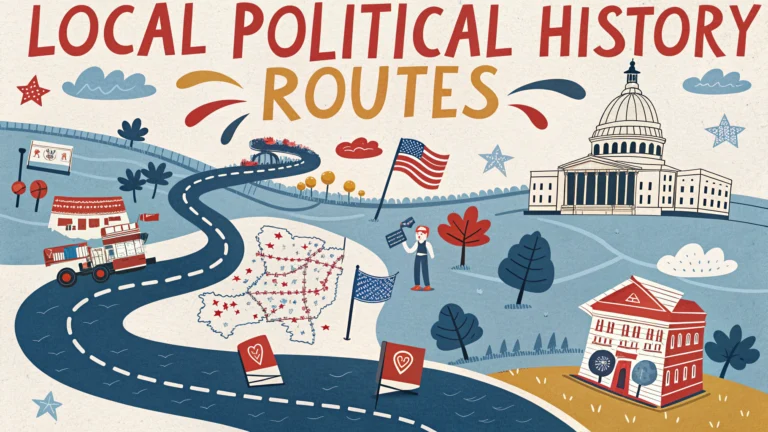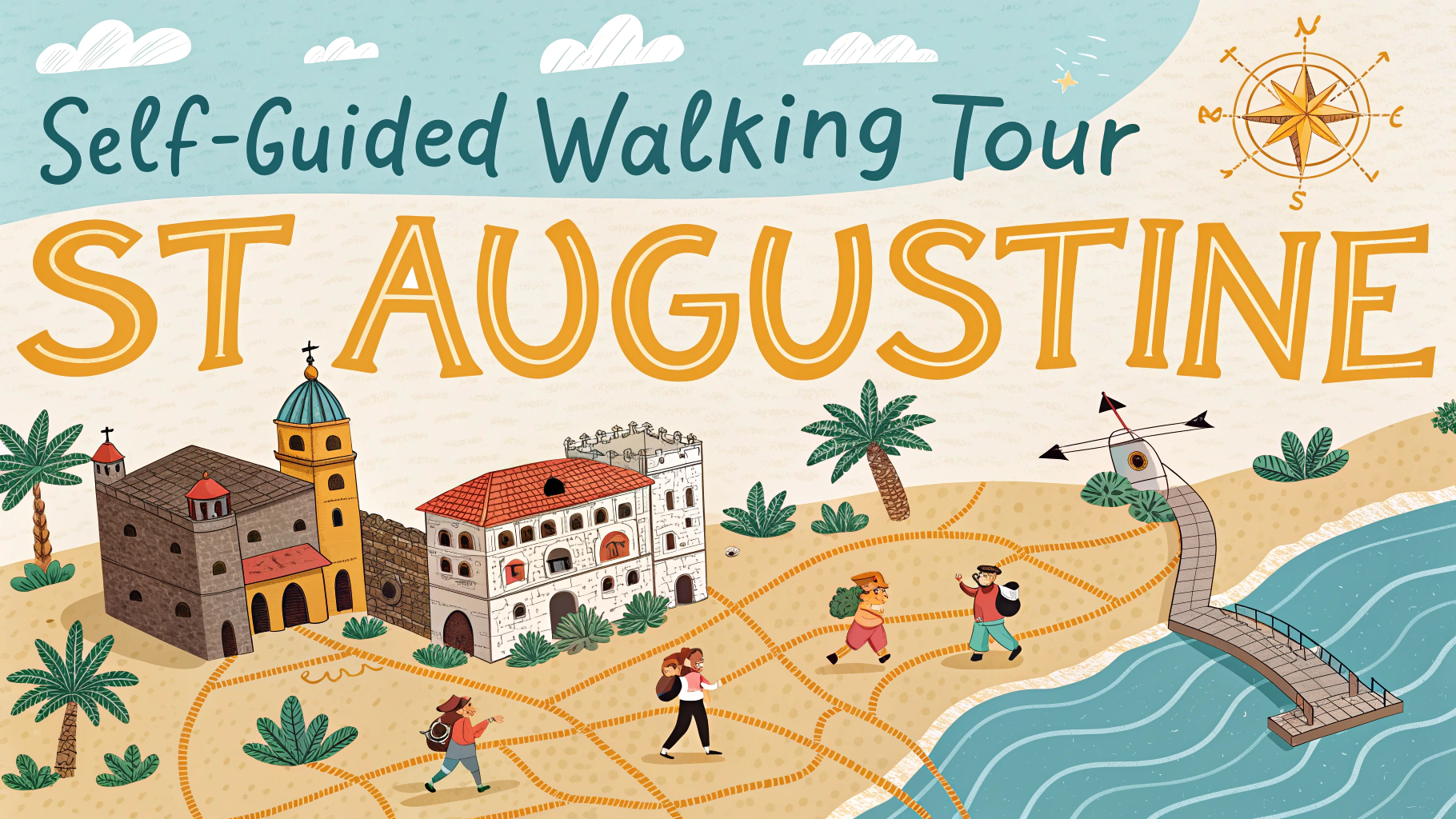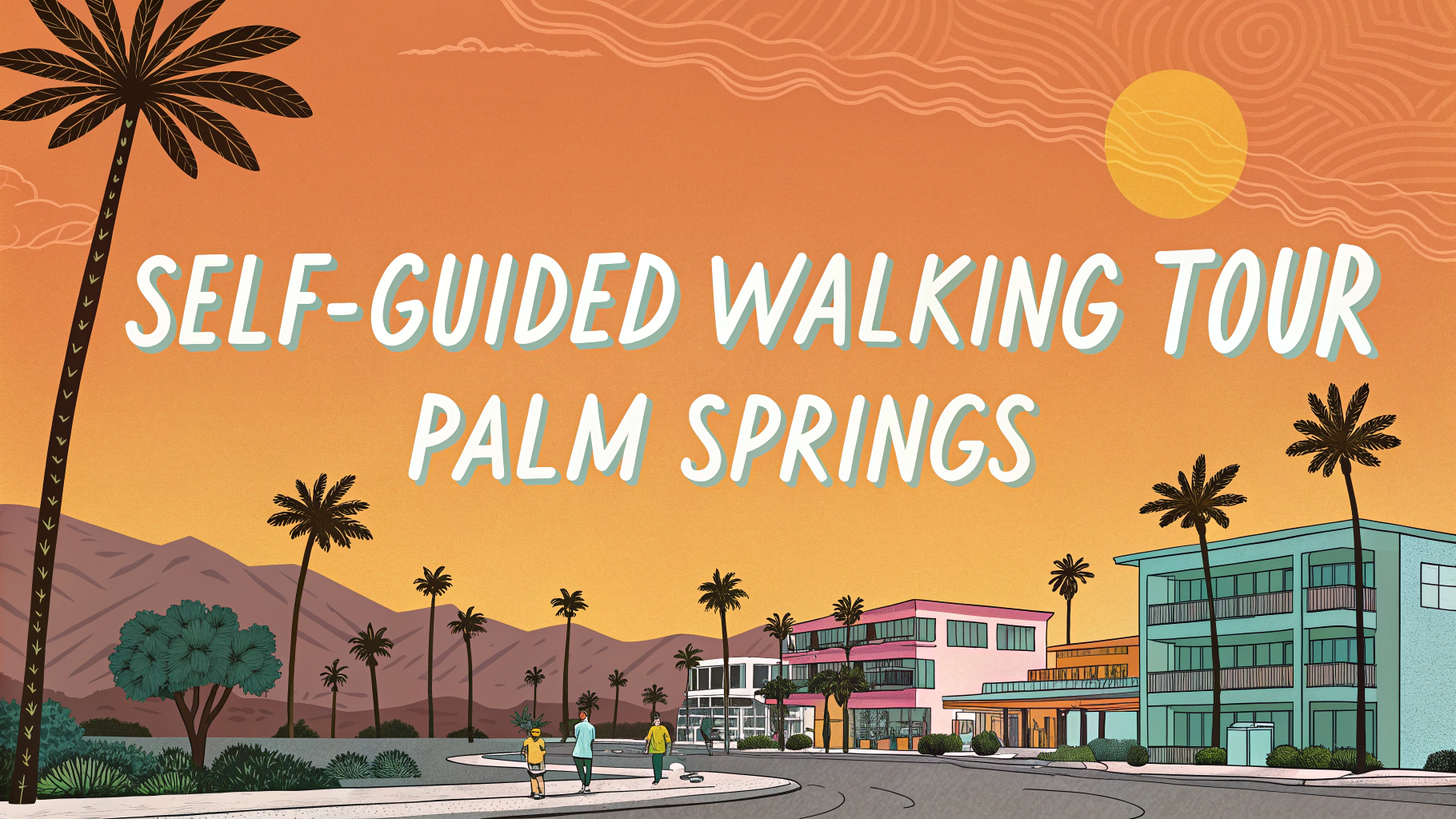Self-guided political history walking tours offer a unique way to explore local government landmarks, historic sites, and places where significant political events occurred.
Start your tour planning by identifying key historical political sites in your area through local historical societies, museums, and government archives.
Essential Planning Tips
- Download offline maps before starting your route
- Carry water and wear comfortable walking shoes
- Begin early morning to avoid crowds and heat
- Bring a camera to document historical markers
- Pack a small notebook for taking notes
Common Route Stops
- City/Town Hall
- Historic courthouses
- Former political residences
- Campaign speech locations
- Sites of political demonstrations
- Historic election venues
Research opening hours for any buildings you plan to enter, as many government buildings have restricted access times.
Resource Links
- National Archives: Place-Based Research
- Library of Congress: Digital Collections
Mobile Apps for Route Planning
| App Name | Best Feature |
|---|---|
| Google Maps | Custom route creation |
| AllTrails | Offline navigation |
Safety Tips
- Share your route with someone
- Keep emergency numbers handy
- Check weather forecasts
- Stay aware of your surroundings
Consider joining local historical societies for access to exclusive walking tour maps and expert guidance.
Documentation Methods
- Take photos of historical markers
- Record audio descriptions
- Use GPS tracking apps
- Create digital maps
Contact local tourism offices for additional political history resources and guided tour options (Call 311 in most US cities).
Recommended Equipment
- Portable phone charger
- Small first aid kit
- Weather-appropriate clothing
- Local area map
Tour Enhancement Options
- Audio guides from local museums
- Period-specific history books
- Historical photographs for comparison
- Interactive digital timelines
Group Tour Considerations
- Maximum recommended group size: 12 people
- Designate a group coordinator
- Plan rest stops every hour
- Consider mobility needs
Educational Components
Pre-Tour Research
- Local political timelines
- Key historical figures
- Major political events
- Architectural significance
Learning Activities
- Site-specific questionnaires
- Historical fact scavenger hunts
- Before/after photo comparisons
- Timeline creation exercises
Seasonal Considerations
| Season | Special Considerations |
|---|---|
| Summer | Early morning starts, hydration stations |
| Winter | Shortened daylight hours, weather gear |
Conclusion
Self-guided political history walking tours provide an immersive educational experience while promoting physical activity and civic engagement. Proper planning, documentation, and safety measures ensure a meaningful exploration of local political heritage. Regular updates to tour routes and continued research help maintain historical accuracy and relevance.
Remember to respect historical sites, follow local guidelines, and share discoveries with the community to preserve political history for future generations.
FAQs
- What is the best time of year to take a political history walking tour?
Spring and fall offer the most comfortable temperatures and pleasant conditions. Many historical buildings and monuments are also less crowded during these seasons. - How long does a typical political history walking route take to complete?
Most self-guided political history routes take between 2-3 hours to complete at a comfortable pace, though this can vary depending on how many stops you make and time spent at each location. - Do I need special permissions to visit political historical sites?
While most exterior locations are freely accessible, some government buildings and historical interiors may require advance reservations or security clearance. Check official websites before visiting. - What should I bring on a political history walking tour?
Comfortable walking shoes, weather-appropriate clothing, water, a map or mobile device with downloaded route information, and a camera for documenting historical sites. - How can I access historical information while on the route?
Most self-guided tours offer downloadable maps, audio guides, or mobile apps. Local historical societies often provide printed guides or QR codes at significant locations. - Are political history walking routes accessible for those with mobility issues?
Most urban routes follow paved sidewalks and are wheelchair accessible, though some historical sites may have limited accessibility. Check route details for specific accessibility information. - Where can I find reliable information about local political history routes?
Local tourism offices, historical societies, municipal websites, and dedicated walking tour apps are excellent sources for verified political history routes. - How are self-guided political history routes typically organized?
Routes are usually organized chronologically or thematically, connecting significant political events, buildings, monuments, and historical markers within walking distance of each other. - What is the difference between guided and self-guided political history tours?
Self-guided tours allow flexible timing and pace but require more personal research, while guided tours provide expert commentary but follow fixed schedules and routes. - How can I verify the historical accuracy of information on these routes?
Cross-reference information with local historical societies, government archives, university libraries, and official historical registers.








